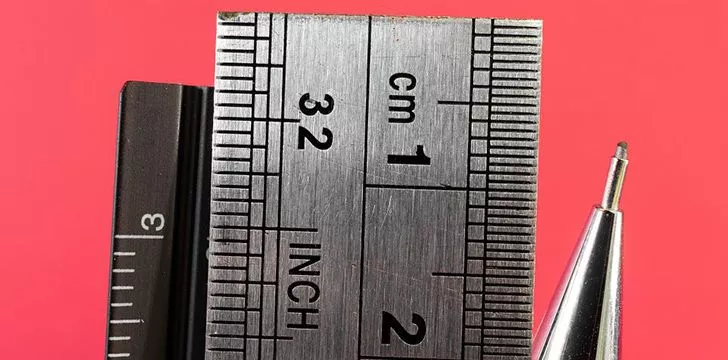Although a bill was almost passed to make the United States adopt the Metric System, the cost of this huge infrastructure change was deemed too high.
Regrettably, the United States is unlikely to fully transition to using the Metric System, despite its ease of use and widespread global usage.
Why won’t the United States switch to the Metric System, you may ask? The simplest answer is that it would require a significant amount of time and money, and the Metric System is used almost as frequently as the Imperial system.
Let me explain the stubbornness of America: when the topic of switching unit systems arose in Congress in 1975, the passage of a bill favoring the Metric System was blocked by large corporations and American citizens who did not want to go through the time-consuming and expensive process of changing the entire infrastructure of the country.
Many also believed that the United States should retain its particular system, setting it apart from other countries and symbolizing its status as a leader rather than a follower.
What exactly is the Metric System and what does America use instead?

Most countries use the Metric System, which employs measuring units such as meters and grams and adds prefixes like kilo, milli, and centi to measure orders of magnitude.
In the United States, the older Imperial system is used, where things are measured in feet, inches, and pounds.
This dual system exists for various reasons, but debates regarding the creation of a good national measurement standard date back to 1790.
The Metric System is appealing due to its simplicity

The Metric System is based on a measure of 10.
This enables conversions from different units to be done with ease by simply moving the decimal point left or right.
For instance, 1 millimeter is equivalent to 0.001 meter, while a centimeter, which is a unit ten times larger than a millimeter, is 0.01 meter.
In contrast, the basis of the Imperial system is significantly less flexible, and numbers fluctuate wildly as there is no established rule for each measurement.
The United States is more metric than most realize

Despite the national controversy, American manufacturers have produced all-metric cars, and the wine and spirits industry has switched from fifths to 75-milliliter bottles.
The Metric System is now the standard in most industries, with a few notable exceptions like construction.
Its use in public life is also increasing, as anyone who has participated in a “5K” can attest.
The United States has been moving towards metrification since the country’s inception.
In Conclusion
Currently, most people accept a joint unit system, teaching children in school both the traditionally used Imperial System and the Metric System used by most of the world.
This is why U.S. measuring sticks, or rulers, often feature both inches and centimeters.
Unfortunately, widespread acceptance of joint use also means that the US system is unlikely to be officially phased out anytime soon, disappointing Metric System enthusiasts.
FAQ
1. What is the metric system?
The metric system is a system of measurement used throughout most of the world, based on units of ten.
2. Why doesn’t the U.S. use the metric system?
The U.S. has not fully adopted the metric system because of historical reasons, cost, and the difficulty of converting to a new system of measurement. In the 1970s, the U.S. attempted to switch to the metric system, but the effort ultimately failed.
3. How does not using the metric system affect the U.S.?
Not using the metric system can create confusion and inconvenience for businesses and individuals who work internationally, as well as hinder scientific and technological advancements.
4. Are there any industries in the U.S. that use the metric system?
Yes, some industries in the U.S. have adopted the metric system, such as the automotive and pharmaceutical industries.
5. What are the benefits of using the metric system?
The benefits of using the metric system include its simplicity, ease of use, and universal application, which can facilitate international trade and communication.
6. Are there any efforts to transition to the metric system in the U.S.?
There have been some efforts to transition to the metric system, such as the Metric Conversion Act of 1975, but the U.S. has not fully adopted the system.
7. How does the U.S. compare to other countries in terms of using the metric system?
The U.S. is one of the few countries that has not fully adopted the metric system, with only a few industries using it.
8. Is it difficult to learn and use the metric system?
No, the metric system is easy to learn and use, as it is based on units of ten.
9. Will the U.S. ever fully adopt the metric system?
It is difficult to predict if or when the U.S. will fully adopt the metric system, as it would require a significant effort and cost.

Zayn Anderson is a prolific writer with a passion for uncovering the world’s intriguing facts. Armed with an insatiable curiosity, he delves into various subjects, from history and science to nature and technology.
